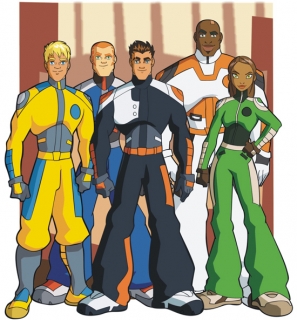 W
WA.T.O.M. – Alpha Teens on Machines is an English-language French superhero animated television series produced by SIP Animation in association with Jetix Europe.
 W
WAction Man is an action figure launched in Britain in 1966 by Palitoy as a licensed copy of Hasbro's American "movable fighting man", G.I. Joe.
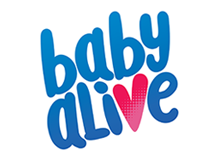 W
WBaby Alive is a baby doll brand made by Hasbro that eats, drinks, wets and in some cases messes and has a movable mouth. It was originally made and introduced by Kenner in 1973, and reintroduced by Hasbro in 2006.
 W
WBeyblade is a line of spinning-top toys originally developed by Takara, first released in Japan in July 1999, along with its debut series. Following Takara's merger with Tomy in 2006, Beyblades are now developed by Takara Tomy. Various toy companies around the world have licensed Beyblade toys for their own regions, including Hasbro in Western countries, Sonokong in South Korea, and Takara Tomy for Eastern countries.
 W
WBlythe is a fashion doll, about 28 cm (11 inch) tall, with an oversized head and large eyes that change color with the pull of a string. It was created in 1972 and was initially only sold for one year in the United States by toy company Kenner. In 2001 the Japanese toy company Takara began producing new editions of Blythe dolls. There is a network of hobbyists who customize the doll for resale and create clothing and shoes for Blythe. Enthusiasts share photographs of their work and other types of dolls on the Internet.
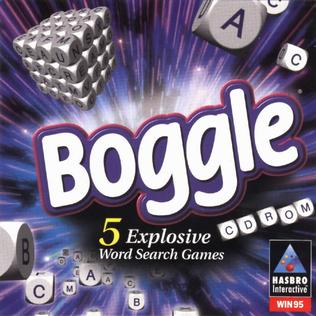 W
WBoggle is a word puzzle video game based on the word game of the same name. It was published on September 30, 1997 by Hasbro Interactive, and developed by PCA, Inc. and Third-i Productions. The game was released for Windows 95.
 W
WBop It toys are a line of audio games. By following a series of commands issued through voice recordings produced by a speaker by the toy, which has multiple inputs including pressable buttons, pull handles, twisting cranks, spinnable wheels, flickable switches – the player progresses and the pace of the game increases.
 W
WDownfall is a two-player game for players aged 7 and older, first marketed by the Milton Bradley Company in 1970.
 W
WThe Easy-Bake Oven is a working toy oven that Kenner introduced in 1963, and which Hasbro still manufactured as of late May 2017. The original toy used a pair of ordinary incandescent light bulbs as a heat source; current versions use a true heating element. Kenner sold 500,000 Easy-Bake Ovens in the first year of production. By 1997, more than 16 million Easy-Bake Ovens had been sold.
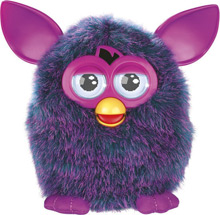 W
WFurby is an American electronic robotic toy that was originally released in 1998 by Tiger Electronics. It resembles a hamster or owllike creature and went through a period of being a "must-have" toy following its holiday season launch, with continual sales until 2000. Over 40 million Furbies were sold during the three years of its original production, with 1.8 million sold in 1998, and 14 million in 1999. Its speaking capabilities were translated into 24 languages.
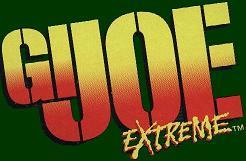 W
WG.I. Joe Extreme is a line of military-themed toys that was sold in retail from 1995 to 1997. The toys were produced by Kenner following their acquisition by former competitor Hasbro and was intended to succeed the G.I. Joe: A Real American Hero line, which was discontinued the previous year. It was supported by a syndicated animated series that ran for two seasons and a series of comics.
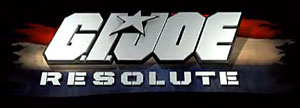 W
WG.I. Joe: Resolute is an American animated television series based on the G.I. Joe franchise. It was written by Warren Ellis, directed by Joaquim Dos Santos, and produced by Sam Register, creator of Cartoon Network's Hi Hi Puffy AmiYumi. It debuted on the web at Adult Swim Video on April 17, 2009 as a series of ten 5-minute episodes and a final 10-minute episode, with a content rating of TV-14-V, and later premiered as a movie on Canadian television network Teletoon on April 24, 2009 and on Adult Swim on April 25, 2009. The show has a darker and more realistic tone compared to other installments in the franchise, and also uses elements from both the cartoons and the comics, and is described by Warren Ellis as a "fusion".
 W
WG.I. Joe: Sigma 6 is a line of military-themed action figures and toys produced by Hasbro, re-imagining the characters of the 1980s toyline, G.I. Joe: A Real American Hero.
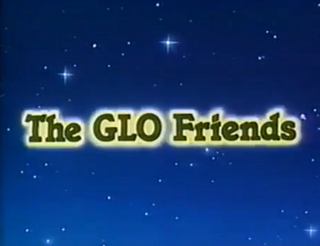 W
WThe Glo Friends is an American television series that originally aired in 1986 as a segment of My Little Pony 'n Friends. Produced by Sunbow Productions and Marvel Productions in collaboration with Toei Animation, the 26 segments of Glo Friends played in rotation as a secondary series, alternating with MoonDreamers and Potato Head Kids. Glow Friends was later broadcast on the (CBN) Family Channel from 1989 to 1995 as part of the My Little Pony rebroadcast.
 W
WGlo Worm is a stuffed toy for young children, designed by Hasbro's Playskool division, and made in Pawtucket, Rhode Island. Introduced in 1982, the plush, pajamaed worm body contained a battery-powered device that when squeezed would light up the toy's vinyl head from within, creating a soft glow. The original toy, upon release, was such a success that Hasbro released a new Musical Glo Worm toy, a series of story books, night lights, videos and other merchandise that continued until the early 1990s. However, in late 2005, the product was criticized for harming children; its plastic head was softened with phthalates, which can be dangerous if swallowed by children.
 W
WThe iDog was a robot dog toy designed and manufactured by Sega Toys. An iDog figure receives input from an external music source, such as an MP3 player, and will light up and "dance" to the music's rhythm. It is marketed as the eDog in Germany, Italy and the Netherlands.
 W
WThe Kenner toy company produced a line of Star Wars action figures based on characters in the original Star Wars movie trilogy. Over 100 unique action figures were produced and sold from 1978 to 1985, during which time more than 300 million Star Wars action figures were sold.
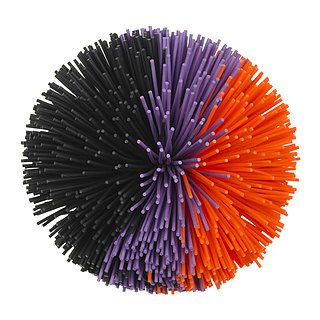 W
WThe Koosh ball is a toy ball made of rubber filaments (strands) radiating from a steel-bound core, patented in 1987 by Scott H. Stillinger. The company later expanded their product line to include 50 other Koosh-related products, including keyrings, baseball sets, and yo-yos.
 W
WLazer Tag is a brand name for the pursuit game using infrared toy guns, generically known as "laser tag". It was developed by Worlds of Wonder and launched in 1986. As one of America's top hit toys of 1986-1987, Lazer Tag was aggressively leveraged by Worlds of Wonder's retail sales network in an ultimatum to force the Nintendo Entertainment System into retail stores, allowing its smash hit nationwide launch, which prompted Nintendo of America to lead the nation's recovery from the 1983 video game crash and dominate the industry. The Lazer Tag brand is currently a subsidiary of Hasbro's Nerf toy line.
 W
WLincoln Logs are an American children's toy consisting of square-notched miniature logs used to build small forts and buildings. They were invented around 1916 by John Lloyd Wright, second son of the well-known architect Frank Lloyd Wright. Lincoln Logs were inducted into the National Toy Hall of Fame in 1999. They are named for the eponymous sixteenth president of the United States who once lived in a log cabin.
 W
WLite-Brite is a toy that was originally marketed in 1967. It consists of a light box with small colored plastic pegs that fit into a panel and illuminate to create a lit picture, by either using one of the included templates or creating a "freeform" image on a blank sheet of black paper. There are eight peg colors: red, blue, orange, white (clear/colorless), green, yellow, pink, and violet (purple).
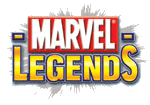 W
WMarvel Legends is an action figure line based on the characters of Marvel Comics, initially produced by Toy Biz, then by Hasbro. This line is in the 6-inch (150 mm) scale, with spin-off lines in the 4-inch (100 mm), 8-inch (200 mm), and 12-inch (300 mm) scale.
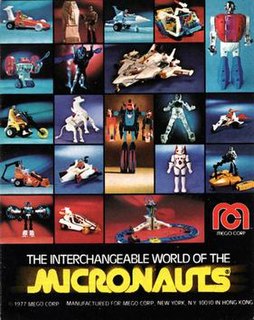 W
WMicronauts was a North American science fiction toyline manufactured and marketed by Mego from 1976 to 1980. The Micronauts toyline was based on and licensed from the Microman toyline created by Japanese-based toy company Takara in 1974.
 W
WMighty Muggs are a vinyl–plastic collectible toy series made by Hasbro. The toys resemble super deformed versions of characters from the following franchises: Star Wars, Marvel Comics, Indiana Jones, G.I. Joe, and Transformers. There is a line of smaller figures, called Mini Muggs, as well as blank Mighty Muggs for customization. The line was commercially dormant for a few years, but certain retailers received exclusive 'continuation' lines. Comic-Con International 2011 had an exclusive Avengers line.
 W
WMonkgomery is a children's puppet. It takes the form of a talking monkey wearing a necktie, released by Hasbro in 1986. The toy is 17" in height and sits at approximately 14" tall. The toy has two Velcro strips on his hands allowing him to be hung from objects. The toy can also function as a cuddle buddy at night and a day time play toy. Additional speech modules provided 200 new words.
 W
WMonopoly is a multi-player economics-themed board game. In the game, players roll two dice to move around the game board, buying and trading properties, and developing them with houses and hotels. Players collect rent from their opponents, with the goal being to drive them into bankruptcy. Money can also be gained or lost through Chance and Community Chest cards, and tax squares. Players receive a stipend every time they pass "Go", and can end up in jail, from which they cannot move until they have met one of three conditions. The game has numerous house rules, and hundreds of different editions exist, as well as many spin-offs and related media. Monopoly has become a part of international popular culture, having been licensed locally in more than 103 countries and printed in more than 37 languages.
 W
WMr. Potato Head is an American toy consisting of a plastic model of a potato "head" to which a variety of plastic parts can attach — typically ears, eyes, shoes, hat, nose, pants and mouth.
 W
WAmerican toy company Hasbro launched the third incarnation of My Little Pony toyline and media franchise in 2003. The revamped line of dolls was targeted to a younger audience than the previous lines. This particular era is often unofficially referred to as "Generation Three" or "G3" by collectors. Until the generation's end in 2009, there have been at least two minor revamps. A series of direct-to-video animated films accompanied the line-up.
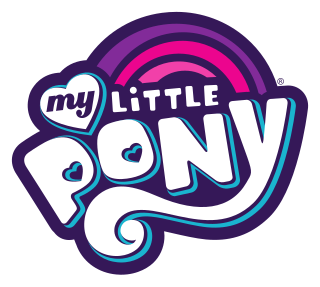 W
WAmerican toy company Hasbro launched the fourth incarnation of My Little Pony toyline and media franchise in 2010. This generation is not given any name by Hasbro, but some of later releases of toys are labeled with the subtitle "Friendship Is Magic". It is unofficially referred to the "Fourth Generation", "Generation Four" or "G4" by collectors.
 W
WNakNaks were collector's toys manufactured by Hasbro from early 2001 to late 2003. They were battle stacking action figures that "clicked" when their arms or legs were moved.
 W
WNerf is a toy brand formed by Parker Brothers and currently owned by Hasbro. Most of the toys are a variety of foam-based weaponry, with other Nerf products including balls for sports such as American football, basketball, and baseball. The most notable of the toys are their dart guns that shoot ammunition made from "Nerf foam". Their primary slogan, first introduced in the 1990s, is "It's Nerf or Nothin'!". Annual revenues under the Nerf brand are approximately US$400 million.
 W
WA Nerf Blaster is a toy gun made by Hasbro that fires foam darts, discs, or foam balls. The term "Nerf gun" is often used to describe the toy; however, it is often used as a blanket term for any foam dart blaster, regardless of whether or not it has the Nerf brand name. Nerf blasters are manufactured in multiple forms. The first Nerf blasters emerged in the late 1980s with the release of the Nerf Blast-a-Ball and the Arrowstorm.
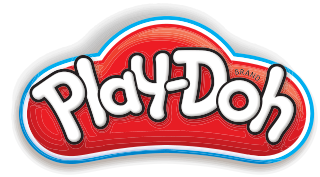 W
WPlay-Doh is a modeling compound used by young children for arts and crafts projects at home. The product was first manufactured in Cincinnati, Ohio, United States, as a wallpaper cleaner in the 1930s. Play-Doh was then reworked and marketed to Cincinnati schools in the mid-1950s. Play-Doh was demonstrated at an educational convention in 1956 and prominent department stores opened retail accounts.
 W
WPlayskool is an American company that produces educational toys and games for children. It is a subsidiary of Hasbro, Inc., and is headquartered in Pawtucket, Rhode Island. The last five letters of the brand name are a sensational spelling of "school".
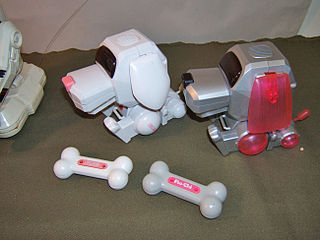 W
WPoo-Chi, one of the first generations of robopet toys, is a robot dog designed by Samuel James Lloyd and Matt Lucas, manufactured by Sega Toys, and distributed by Tiger Toys. Poo-Chi was released in 2000 and discontinued in 2002.
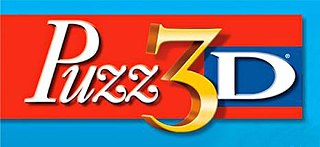 W
WPuzz 3D is the brand name of three-dimensional jigsaw puzzles, manufactured by Hasbro and formerly by Wrebbit, Inc. Unlike traditional puzzles which are composed of series of flat pieces that when put together, create a single unified image, the Puzz 3D series of puzzles are composed on plastic foam, with part of an image graphed on a stiff paper facade glued to the underlying foam piece and cut to match the piece's dimensions. When the pieces are put together, they create a standing structure.
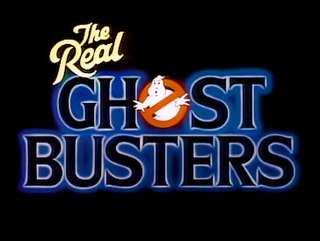 W
WThe Real Ghostbusters is an American animated television series, a spin-off/sequel of the 1984 comedy movie Ghostbusters. The series ran from September 13, 1986, to October 5, 1991, and was produced by Columbia Pictures Television and DIC Enterprises, and distributed by Coca-Cola Telecommunications.
 W
WRecord Breakers: World of Speed were a line of battery operated Mini 4WD manufactured by Hasbro in the late 1980s to 1990s, originally in Japan and then brought to the US. To promote the toys Hasbro created the "National Association of Record Breakers" and hosted races in shopping malls across the country. A syndicated live-action series entitled simply "Record Breakers" plugging the toyline aired some of these events.
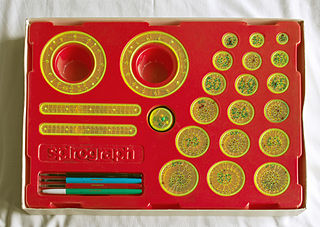 W
WSpirograph is a geometric drawing device that produces mathematical roulette curves of the variety technically known as hypotrochoids and epitrochoids. The well known toy version was developed by British engineer Denys Fisher and first sold in 1965.
 W
WSquawkers McCaw is a animatronic children's toy bird from Fur Real that acts like a real parrot.
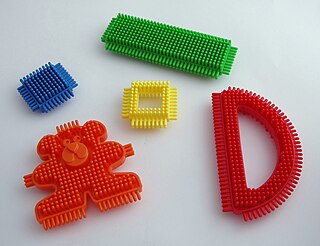 W
WStickle Bricks are a construction toy primarily intended for toddlers invented by Denys Fisher in 1969. The brand is owned by Hasbro, and as of 2016 is sub-licensed to Flair Leisure Products plc.
 W
WStretch Armstrong is a large, gel-filled action figure first introduced in 1976 by Kenner. In 2016, at the New York Toy Fair, Hasbro announced the return of the Stretch Armstrong toy in its original 1976 design.
 W
WThe Super Powers Collection was a line of action figures based on DC Comics superheroes and supervillains that was created by Kenner Products in the 1980s.
 W
WSuper Soaker is a brand of recreational water gun that uses manually-pressurized air to shoot water with greater power, range, and accuracy than conventional squirt pistols. The Super Soaker was invented in 1989 by engineer Lonnie Johnson. The prototype combined PVC pipe, acrylic glass, and an empty plastic soda bottle.
 W
WTalk 'n Play was an American interactive desktop educational toy book reader with a built in microphone and action buttons that was sold from 1983 to 1992 as an entertaining and educational toy manufactured by Hasbro. It appears to work utilizing the two sets of right/left tracts to have the "interactive" mono audio segments. It then also provided a record capability so as a child could ad in their own voice and create interactions with characters on the program. It was invented and Patented by Michael J. Freeman Ph.D. and licensed for use by the Children's Television Workshop and the Walt Disney Company, among others. Similar to adapted 4 channels of educational information to produce interactivity, but the main voices were created and produced by Sesame Street and Disney characters under License. Because the toy contained an integrative book reader, some considered it an early lower tech version of the kindle. Talk'N play would say turn the page now. Story programs were produced by others Talk'N Play had many music programs where children could add in or take out, different instruments as the song is played.
 W
WTeddy Ruxpin is an animatronic children's toy in the form of a talking 'Illiop', a creature which looks like a bear. The toy's mouth and eyes move while he reenacts stories played on an audio tape cassette deck built into its back. It was created by Ken Forsse with later assistance by Larry Larsen and John Davies, and the first version of the toy was designed by RKS Design. Later versions have a digital cartridge in place of a cassette. At the peak of its popularity, Teddy Ruxpin became the best-selling toy of 1985 and 1986, and the 2006 version was awarded the 2006 Animated Interactive Plush Toy of the Year award by Creative Child Magazine. A cartoon based on the characters debuted in 1986. Teddy's extreme popularity in 1986 buoyed the controversial launch of the Nintendo Entertainment System, also distributed by Worlds of Wonder.
 W
WThe Tinkertoy Construction Set is a toy construction set for children. It was designed in 1914—six years after the Frank Hornby's Meccano sets—by Charles H. Pajeau, who formed the Toy Tinker Company in Evanston, Illinois to manufacture them. Pajeau, a stonemason, designed the toy after seeing children play with sticks and empty spools of thread. Pajeau partnered with Robert Pettit and Gordon Tinker to market a toy that would allow and inspire children to use their imaginations. After an initially-slow start, over a million were sold.
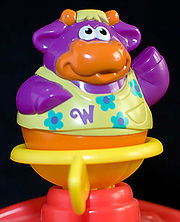 W
WWeebles is a range of children's roly-poly toys originating in Hasbro's Playskool division on July 23, 1971. Tipping an egg-shaped Weeble causes a weight located at the bottom-center to be lifted off the ground. Once released, gravity brings the Weeble back into an upright position. Weebles have been designed with a variety of shapes, including some designed to look like people or animals.
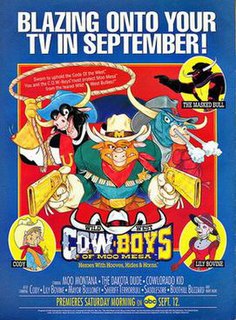 W
WWild West C.O.W.-Boys of Moo Mesa is a 1992–1993 American animated television series created by comic book artist Ryan Brown, known for his work on Teenage Mutant Ninja Turtles. It aired as part of ABC's Saturday morning lineup.
 W
WThe WonderBorg is a programmable consumer robot kit first released for the Bandai WonderSwan and Microsoft Windows PCs in 2000. It is intended to match both the external appearance and mode of transport of a beetle, with functioning antennae and a six-legged design.
 W
WThe WWE Hasbro Action Figure line was an action figure toyline based on the Superstars of the WWE, produced by the toy company Hasbro from 1990 to 1994. The toys were made of plastic, with many featuring a signature action move based on their real life counterpart.